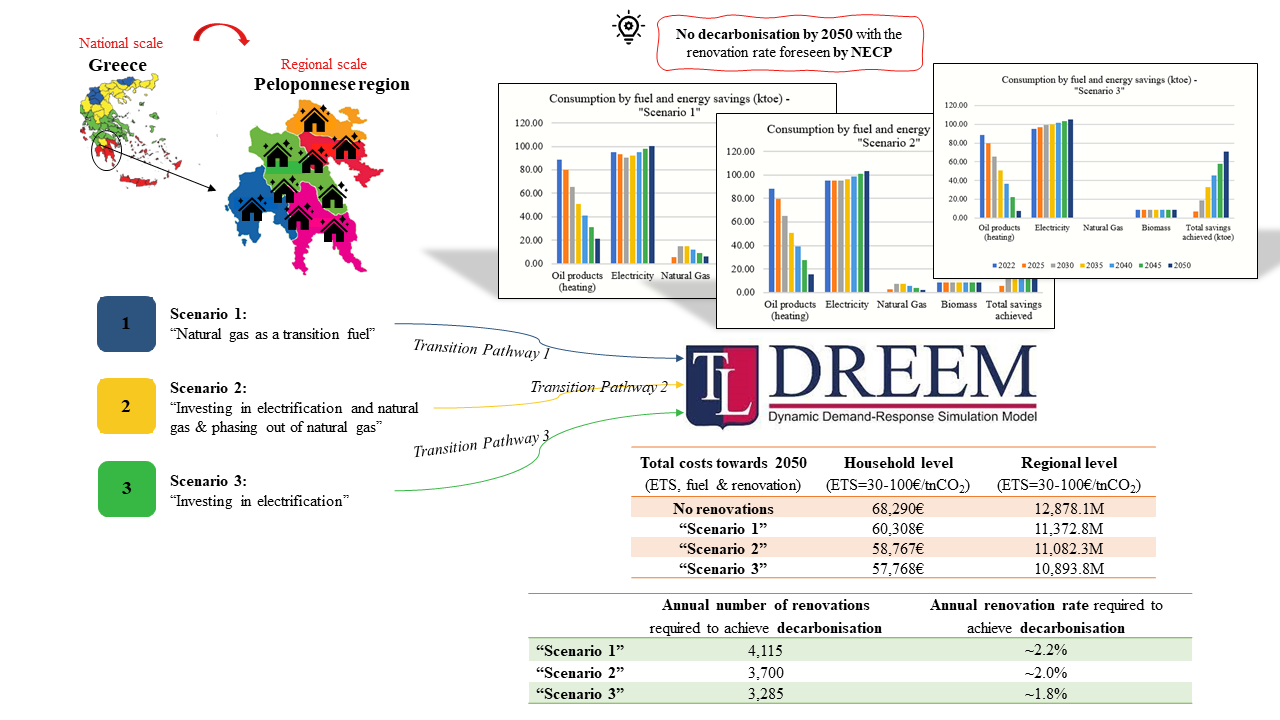
Peloponnese is a region in southern Greece that borders Western Greece to the north and Attica region (where the city of Athens is found) to the north-east. Peloponnese is the only region that consists of regional units in three out of the four climate zones in Greece, bringing together different climatic conditions.
The current national planning in Greece foresees investing in new natural gas infrastructure so that the Peloponnese region is interconnected to natural gas distribution networks. Considering the outbreak of the energy crisis in Europe stemming from the invasion of Ukraine by Russia and the strategic European Union’s decisions regarding the faster reduction of the dependence on fossil fuels, and especially Russian oil and gas, as well as further boosting energy efficiency gains and the share of renewables across all sectors, the current national planning in Greece raises questions regarding the viability of the project in the Peloponnese region.
In addition, the latest version of the National Energy and Climate Plan (NECP) in Greece sets as an objective that by 2030 12-15% of the total number of dwellings in the country, i.e., up to 60,000 homes per year, will be upgraded in terms of energy efficiency (in part or in full), while targeting in the increase of the natural gas consumption, and, thus, the country’s energy dependency.
In this context, we explored the two following Research Questions (RQs):
RQ1: What is the optimal energy mix for the most cost-effective decarbonisation in the residential sector in the Peloponnese region by 2050?
RQ2: Should national planning proceed with investments in new natural gas infrastructure in the region?
Using the Dynamic high-Resolution dEmand-sidE Management (DREEM) model we simulated 3 different energy transition scenarios: i. “Scenario 1: Natural gas as a transition fuel”, ii. “Scenario 2: Investing in electrification and natural gas & phasing out natural gas”, iii. “Scenario 3: Investing in electrification”.
Modelling results showed that investing in electrification increases the financial, environmental, and, thus, social benefits of the energy transition by 2050 in the residential sector in Peloponnese, while it also leads to lower total costs at both the household and the regional level, in comparison to investing in new natural gas infrastructure. Moreover, our findings also highlighted that the current renovation rate envisioned by the latest version of the NECP is not able to lead to decarbonisation levels. Ιf decarbonisation by 2050 is the target, then, again, electrification is the most appealing pathway, since it requires increasing the renovation rate in the Peloponnese region by only 1.18 times, when the other pathways require at least an increase of 1.33 times.
Models used
DREEM
Dynamic, object-oriented, and equation-based high-resolution simulation model
DetailsSENTINEL case study
Case study: National – Greece
Country-specific case with focus on coal phase-out together with a large domestic renewable potential.
Details